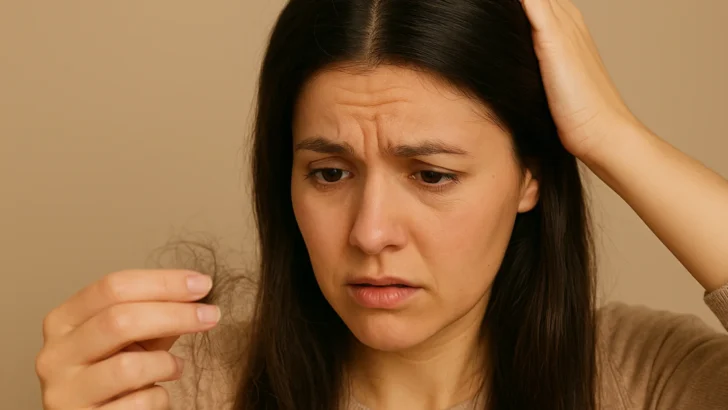If you’ve been scrolling through TikTok looking for a real solution to your hair fall nightmare, you’re not alone. Hair shedding, thinning ponytails, and widening partings have quietly become modern beauty concerns and they’re showing up on our For You pages more than ever.
And now, one of the most trusted dermatologists on the app, Dr. Aamna Adel, a London-based dermatologist with over 1.8 million followers has shared the definitive game plan to fight hair fall and boost regrowth. Her latest viral video on dealing with hormonal hair thinning, and Dr. Adel didn’t just identify the root cause, she offered three powerful, evidence-based treatments that dermatologists genuinely swear by.
Welcome to your new hair hair fall survival guide.
Dermatologist Shares 3 Step Hair Fall Control Routine
Before we go full detective mode, it’s important to know that losing 50 to 100 hairs a day is completely normal, according to the NHS. That said, if you’re noticing thinner ponytails, more visible scalp, or a parting that seems to be widening, it could be a sign of androgenetic alopecia, commonly known as male or female pattern baldness. It’s genetic, and yes, it can affect women too.
Hair loss can also be triggered by stress, illness, iron deficiency, dramatic weight loss, or as a side effect of cancer treatments. So if you’re seeing consistent shedding, don’t panic, but do pay attention.
Step 1: Minoxidil
“There’s a reason why every single dermatologist is obsessed with minoxidil and no, we’re not being paid to say it,” Dr. Adel says in her video.
She recommends the 5% men’s foam version of Rogaine(yes, even for women,just apply carefully) and boosts its power by pairing it with tretinoin and derma stamping for better absorption.
Why it works: Minoxidil increases blood flow to hair follicles, helping them grow thicker, healthier strands. While results take time (think 3-6 months), consistency is key here and clinical trials back it.
Women should not use finasteride (another hair loss medication) unless under direct medical supervision, as per NHS guidelines.
Last update on 2025-07-31 / Affiliate links / Images from Amazon Product Advertising API
Step 2: Anti-Fungal Shampoo
You’ve probably never thought of your shampoo as a hair growth treatment, but Dr. Adel recommends Nizoral anti-fungal shampoo as her second must-have.
Why?
It helps reduce inflammation on the scalp and blocks DHT, a hormone that’s been strongly linked to pattern hair loss in both men and women. Use it 2 to 3 times a week, leave it on for a couple of minutes, then rinse and follow up with your regular shampoo. It’s simple, affordable, and surprisingly effective.
Don’t skip conditioner as anti-fungal shampoos can leave your strands feeling straw-like if not followed by hydrating conditioner.
Last update on 2025-07-31 / Affiliate links / Images from Amazon Product Advertising API
Last update on 2025-07-31 / Affiliate links / Images from Amazon Product Advertising API
Step 3: Low-Level Laser Therapy
Looking to invest in a high-tech solution? Low-Level Laser Therapy (LLLT) devices are now a major player in the hair regrowth space.
Dr. Adel’s take: “Ten minutes, a few times a week, and this baby will help fill out your parting.”
Why it works: The red light energy stimulates hair follicles and boosts cell activity, promoting regrowth in dormant follicles. It’s FDA-cleared, scientifically backed, and while it’s on the pricier side, many users see visible improvement with consistent use.
Last update on 2025-07-31 / Affiliate links / Images from Amazon Product Advertising API
Last update on 2025-07-31 / Affiliate links / Images from Amazon Product Advertising API
Over To You
Not all hair loss is permanent but even temporary thinning can impact your confidence. The key is understanding the why behind your shedding and acting fast with treatments that work with your biology, not against it.
Dr. Adel’s TikTok may feel like a casual scroll, but her recommendations are grounded in clinical evidence and real-world results. If your hair’s been feeling more fragile lately, this three-step routine could be the reset button you’ve been looking for.
Still unsure?
Book an appointment with your dermatologist to rule out underlying medical causes like thyroid issues, anemia, or hormonal imbalances.
Hair fall isn’t the end, it’s the beginning of a new, smarter routine.


green trends ashok nagar
Friday 20th of June 2025
Loved this reminder that hair fall can be a turning point toward better care. Great tips and product recs—especially appreciate the balanced approach!